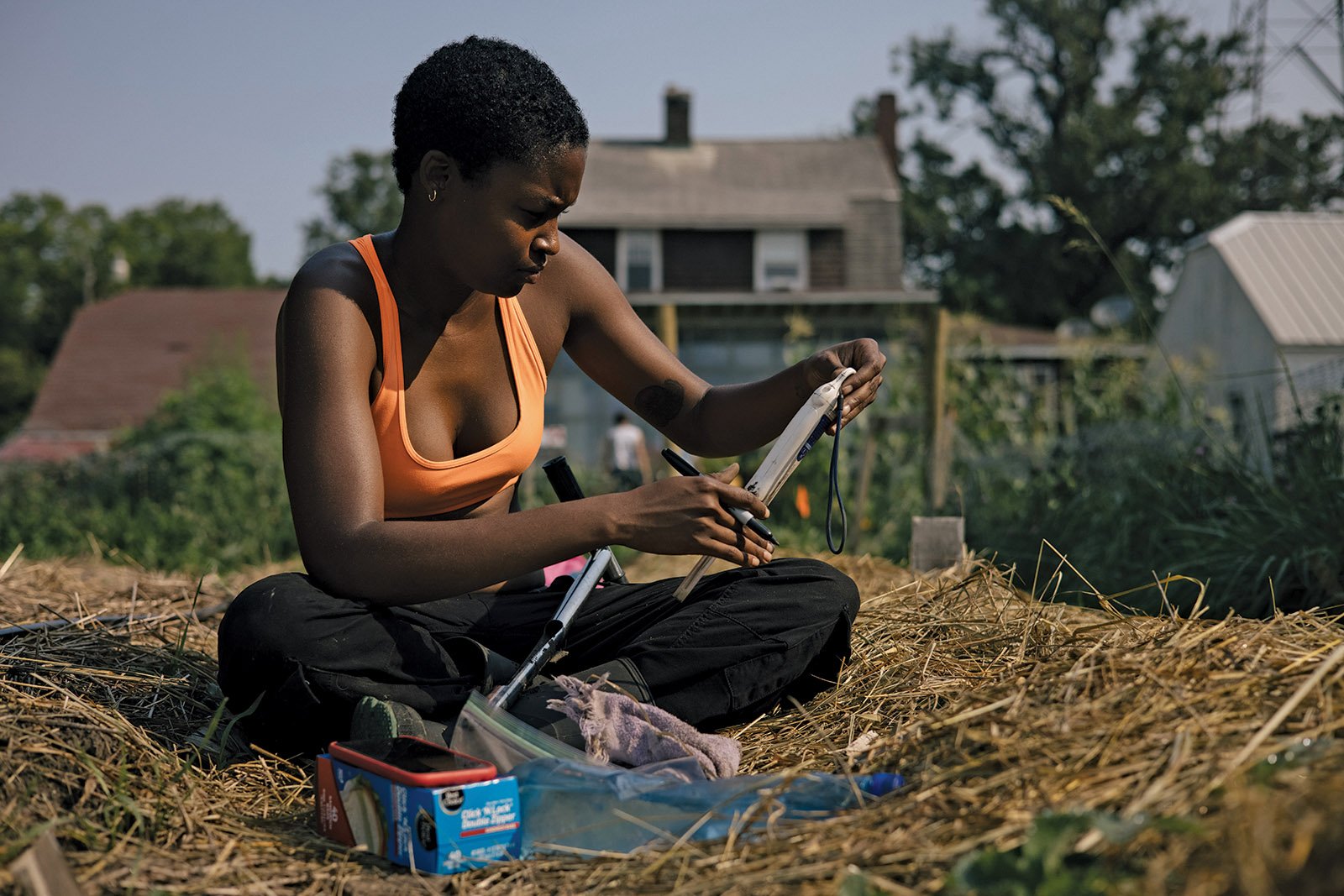Common Ground
Photographs and essay by Alyssa Schukar
Growing up in Chicago, twins Gavi and Remi Welbel loved to visit their grandparents’ farm in eastern Illinois. They gathered for meals around the farmhouse table and chased cousins through acres of corn and soy.
Their young, rural relatives were expected to continue farming, but most moved to cities for more reliable livelihoods. After their grandparents died, the house sat empty for years.
Iroquois County, where the Welbels farm, is surrounded by industrialized farming, a large-scale system that relies on monocrops like corn and soy and can lead to degraded soil, polluted water, and the loss of biodiversity. It also requires fewer people to work the land, which drives population decline and business closures. In 2020, the Welbels decided to do what they could to reverse that trend. They returned to Iroquois County, where they practice regenerative farming and conduct research on climate change mitigation with other young farmers and scientists-in-training.
They also built relationships with neighboring farmers. “There is common ground between regenerative farmers and conventional farmers,” Gavi said. “They care about the soil. They also care about their livelihood, and they care about the vitality of their community that they’ve seen stripped away by industrial agriculture.”
American agriculture—and Iroquois County’s future—became intertwined with industrialized farming in the mid-20th century. Farmers began to sell their products at prices determined by a global commodities market, but only large farms could survive on such narrow profit margins. Small family farms, once the backbone of the local economy, had to expand their operations or get out.
Zumwalt Acres cofounders Gavi Welbel (left) and Remi Welbel walk along a road intersecting a portion of their family’s land. The twins—who serve as the Research Coordinator and Education Coordinator, respectively—are the youngest generation of Zumwalts to work the farm.
Many got out. The county has lost 15 percent of its population in the two decades since Gavi and Remi Welbel were born. Locals must travel farther to access necessities, like grocery stores and health care. School systems lose resources and students. Sheldon, the town nearest to the farm, was once bustling and full of life. “There used to be a really thriving school system,” Remy said. Young families shopped at local stores along Main Street. But most of those stores have closed, and now “we are the young people,” she said.
The Welbels’ return counters the area’s sustained loss of young people. They’re bringing life back to the old farmhouse as well as the county. And they are breathing life into the soil by transforming the once-conventional family farm through regenerative practices. Their organic fields restore degraded land while producing food sustainably. They are also contributing to scientific efforts to combat the climate crisis while equipping the next generation of farmers and climate leaders through their apprenticeship program.
Apprentice Eric Luu prepares to bring vegetables into the greenhouse attached to the farmhouse.
Apprentice Zaria Howell tests the soil pH of a small garden as part of a study of the use of biochar and basalt as soil additives.
The Welbels’ farm conducts trials on about 200 acres surrounding the family farm and another few hundred more scattered across the county. With significant funding and support from Yale University, the University of Illinois, and the USDA, they hope to expand to more than 100,000 acres in the coming years. The farm’s novel carbon sequestration techniques include the use of biochar—an indigenous, carbon-rich soil additive—and basalt—a rock that captures carbon from the atmosphere. They also practice agroforestry, a form of farming that uses trees and other perennial crops to grow food organically, and they have recently begun to study the climate benefits of mycelium cultivation.
Adoption of these practices by conventional farmers will take time. Through conversations and by supporting the local economy, the Welbels are becoming part of the community. This has led to buy-in from some neighboring farmers—including Johnny Zumwalt, a fifth-generation farmer and distant cousin to the Welbels, who now runs basalt trials in his fields and is beginning to rotate crops to improve soil health. “We’re basically sitting on the most fertile land in the world right around here,” Zumwalt said. “It’s pretty sad that all we can raise is corn and soybeans.”
Remi Welbel harvests Dinosaur Kale.



















